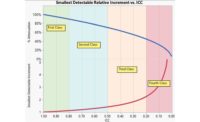Imagine this: Company A is an internationally respected, world-class company that manufactures high-end kitchen appliances. Their products are coveted by homeowners across the globe. Company B is an appliance company, beset with customer-service problems because when their appliances break down within the warranty period, local distributors are without the resources to reliably repair the products, leading to endless visits, erosion of reputation, and customer frustration. Now, imagine Company A and B are the same company.
Unfortunately, this scenario happens all too often, and at the moment, it’s happening to me. Nine months into the installation of appliances into our newly remodeled kitchen we are on the fifth visit from local repair professionals trying to solve the same problem with a kitchen hood that burns out after a few uses.
The problem with companies in this situation is they fail to see and understand the true impact of what we in industry call “the cost of poor quality,” or COPQ. The cost of poor quality is the sum of costs that would disappear if there were no quality problems, in my case, the substantial cost of repairmen coming out over and over in a futile attempt to repair a device that should be removed and replaced.
The reason that COPQ remains invisible to companies like this one is that while their quality reputation comes at a very high cost, the accolades outweigh the horror stories. As a result, management lacks the incentive to look any deeper into the problems, and what may be called the “hidden factory,” a production cycle that includes endless rework but one that has been codified into “the way we do business around here.”
To help reveal the efficiency of an end-to-end production cycle, we have the concept of Rolled Throughput Yield (RTY), which reveals the percent of time that a unit of production runs through the entire process until that unit is complete and ready for presentation to a customer. To calculate RTY requires you to multiply the probability (or frequency) that a production step will be performed without defects or rework, and to multiple these probabilities across all steps in the process. For example, if a three-step process was performed with only a 10% rate of rework per step, the RTY would be .9 x .9 x .9 or .729, meaning only 73% of the time is a product produced that is free from defect or required rework. In the case of our hood, we are unable to calculate the RTY because it’s still defective. The calculation would also require a reasonable sample size as it is intended to represent the efficiency of the process when applied across multiple units, giving rise to an average RTY measure.
A good way to think about RTY is to consider the concept of the “bucket brigade,” a method used in firefighting before the advent of hand-pumped water cannons and modern fire extinguishers. Inevitably, as the bucket is passed from person-to-person, the swinging bucket loses some water that splashes to the ground. That water is a lost opportunity and can be thought of as COPQ or, worse, lost profits. It is often easier to turn a blind eye to these situations rather than to undertake the difficult work of producing a more reliable process.
Let’s return to my experience with this defective kitchen hood. For simplicity, let’s assume the production of that hood through to the end of the warranty cycle was composed of three steps, and the probability of being defect-free is 0.9 x 0.9 x 0.4, with the final step being the post-production performance within the customer warranty period. In that case, we are looking at a RTY of only 32%. Now, we’ve done nothing to improve the process just yet, but the formula makes it abundantly clear where we should be spending our time if we work in quality. The application of RTY through a warranty period will upset purists that claim it goes beyond the production cycle, but for the purpose of illustration, as well as to allow me the opportunity to vent about my vent, I’ll trust that the reader will still embrace the concept.
W. Edwards Deming once said, “the biggest cost of poor quality is when your customer buys from someone else because they didn’t like yours.” Unfortunately, consumers are left with little power to compel a company to look for its own hidden factory, and to Deming’s point, we can only vote with our wallets after getting burned. What makes my personal experience even more frustrating (though by now probably not surprising) is that the Company does not seem to be at all motivated to make our problem a priority. If I’ve described a situation in your company, then the problem is not only related to quality, but culture.
Rolled Throughput Yield can be a powerful tool to use if you seek to fine-tune your quality interventions and want to focus with laser-beam precision on the problems that are causing the most pain across the entire value stream. It’s been said that “quality is like pornography; you know it when you see it.” But when you don’t see it in the processes you manage, an RTY calculation may be the first place to start.




